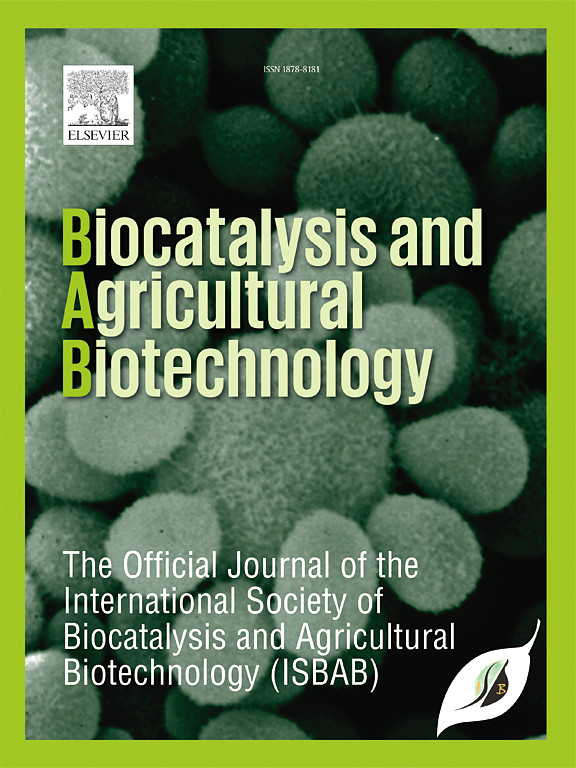Genomic analysis and overexpressing the acetyl-CoA carboxylase of oleaginous Saccharomyces cerevisiae CU-TPD4 for enhanced lipid production from agricultural residues
IF 3.4
Q2 BIOTECHNOLOGY & APPLIED MICROBIOLOGY
引用次数: 0
Abstract
Single-cell oil produced using oleaginous yeasts is emerging as a promising source for biofuels and oleochemicals. Saccharomyces cerevisiae is the model yeast and is widely utilized in several industrial applications. This study presents a genome analysis of the oleaginous S. cerevisiae strain CU-TPD4, which has been reported to accumulate a high amount of lipids. The analysis revealed a genome size of 17.5 million bases and 7619 predicted genes were identified. To understand the differences between oleaginous and non-oleaginous S. cerevisiae, a comparative analysis was conducted. The results identified 5169 shared gene clusters, 36 unique clusters in S. cerevisiae S288C and 22 unique clusters in S. cerevisiae CU-TPD4. Notably, mutations in proteins associated in lipid biosynthesis that affect phosphorylation, such as ACC1, ALE1, and FAA4, were observed, influencing lipid accumulation. Additionally, overexpression of the ACC1 gene under different promoters revealed an approximately 16% improved lipid production under the ENO2 promoter compared to the wild-type strain. Subsequently, lipid production process using rice straw hydrolysate was evaluated. The strain produced a highest total lipid of 1.60 g/L, corresponding to a lipid content of 34.12%. Interestingly, the FA composition of the lipids obtained from the rice straw hydrolysate was comprised of more than 75% monounsaturated FAs. This study provides the first draft genome of oleaginous S. cerevisiae CU-TPD4 and insights into genetic improvements to facilitate lipid production.

求助全文
约1分钟内获得全文
求助全文
来源期刊

Biocatalysis and agricultural biotechnology
Agricultural and Biological Sciences-Agronomy and Crop Science
CiteScore
7.70
自引率
2.50%
发文量
308
审稿时长
48 days
期刊介绍:
Biocatalysis and Agricultural Biotechnology is the official journal of the International Society of Biocatalysis and Agricultural Biotechnology (ISBAB). The journal publishes high quality articles especially in the science and technology of biocatalysis, bioprocesses, agricultural biotechnology, biomedical biotechnology, and, if appropriate, from other related areas of biotechnology. The journal will publish peer-reviewed basic and applied research papers, authoritative reviews, and feature articles. The scope of the journal encompasses the research, industrial, and commercial aspects of biotechnology, including the areas of: biocatalysis; bioprocesses; food and agriculture; genetic engineering; molecular biology; healthcare and pharmaceuticals; biofuels; genomics; nanotechnology; environment and biodiversity; and bioremediation.
 求助内容:
求助内容: 应助结果提醒方式:
应助结果提醒方式:


